Collecting matchbooks and matchboxes, also known as phillumeny, offers a fascinating dive into history, design, and culture. These small, often overlooked everyday objects encapsulate the advertising trends, societal shifts, and even political ideologies of their times and they have been used for over a century to advertise businesses, promote events, and commemorate special occasions, making them miniature time capsules of art and history. Whether you’re interested in the vibrant colors of vintage advertising or the historical significance of commemorative items, matchbooks and matchboxes are accessible, affordable, and full of charm. If you’re new to the world of phillumeny, this guide will help you get started, providing insights into building and preserving your collection.
What are matchbooks and matchboxes?
A matchbook is a small folded cardboard booklet containing matches with a striking strip on the outside, while a matchbox is a small cardboard or wooden box that holds loose matches. Matchbooks were popularized in the early 20th century as an effective form of advertising, while matchboxes predate them by several decades, emerging in the mid-19th century alongside the invention of friction matches.
Both matchbooks and matchboxes often feature intricate designs and advertisements on their covers, turning a simple utility into a form of art. Businesses, restaurants, hotels, and even political campaigns used them to promote their services or messages, and over time, their designs became collectible due to their aesthetic and historical value.
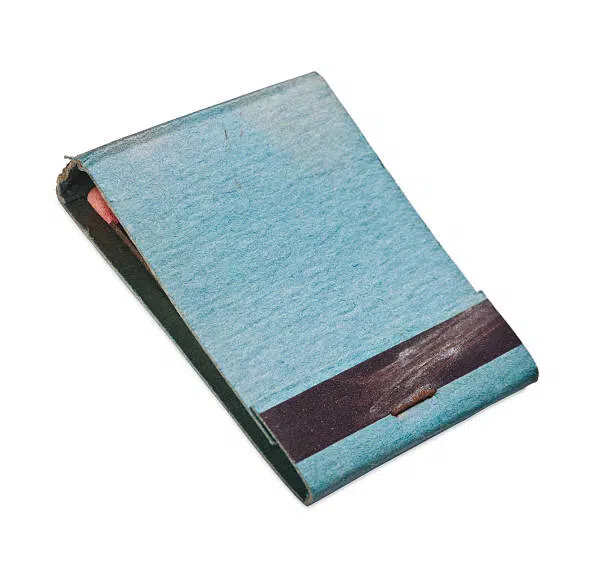
Matchbook
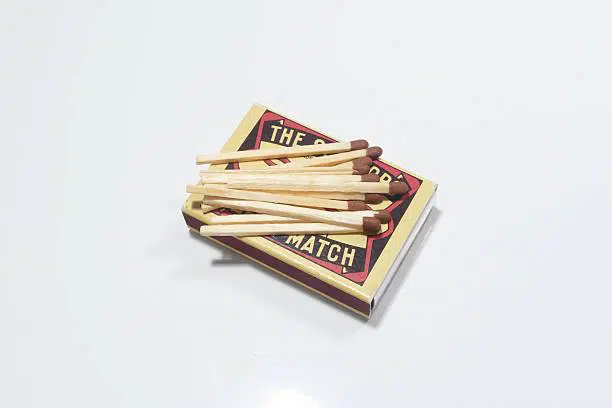
Matchbox
The Appeal of Collecting Matchbooks and Matchboxes
Collecting matchbooks and matchboxes offers an accessible way to engage with history, design, and culture. Here’s why these small items have big appeal:
• Historical Significance: Whether it’s a matchbook from a mid-century diner or a 1930s matchbox from Sweden, each piece reflects the era it was produced in. Matchbooks and matchboxes provide a snapshot of popular culture, politics, and advertising trends of their time.
• Variety and Artistic Appeal: The sheer diversity of designs, colors, and themes makes collecting matchbooks and matchboxes a visually rich hobby. From minimalist designs to intricate advertisements, these small items pack a lot of creativity into their tiny frames.
• Affordability: Both matchbooks and matchboxes are typically inexpensive, making this hobby accessible to collectors of all budgets. You can start small and gradually add to your collection without a significant investment.
• Nostalgia and Sentimentality: Many collectors are drawn to matchbooks and matchboxes because they evoke memories of a particular time or place, such as a favorite restaurant, a hotel stay, or a historic event.
Types of Matchbooks and Matchboxes to Collect
There are many different kinds of matchbooks and matchboxes, offering something for every type of collector. Here are some of the most common categories:
Matchbooks
• Advertising Matchbooks: Businesses used matchbooks to promote their products and services. You’ll find a wide range, from local diners and bowling alleys to iconic brands like Coca-Cola or airlines like Pan Am, advertising matchbooks offer a peek into the commercial landscape of the past.
• Commemorative Matchbooks: These matchbooks were produced to celebrate special occasions, such as sports championships, political campaigns, or milestone anniversaries. Presidential campaign matchbooks from the 1940s and 1950s, for example, are highly sought after by collectors.
• Restaurant and Hotel Matchbooks: These are among the most common types of vintage matchbooks, used as souvenirs by restaurants, bars, and hotels. Many collectors focus on specific cities, such as collecting matchbooks from famous New York City restaurants or hotels. Matchbooks from luxury hotels like the Waldorf Astoria or famous restaurants like Trader Vic’s are highly collectible and provide a glimpse into the golden age of hospitality.
• Souvenir Matchbooks: These were sold or given away at tourist attractions and events. Vintage matchbooks from places like Las Vegas casinos, amusement parks, or World’s Fairs are often decorated with colorful, eye-catching designs that appeal to travelers and history enthusiasts alike.
• Feature Matchbooks: These are considered some of the rarest and most prized among collectors. Typically produced between the 1930s and 1950s by the Lion Match Company, feature matchbooks go beyond simple advertising — they often include unique die-cut shapes, embossed textures, moving parts, or miniature 3D details. What makes them especially rare is that they feature printed ads or artwork on the paper match stems themselves — a costly and intricate printing process that was discontinued many years ago. Today, OH, WHAT A MATCH! is among the very few able to produce feature-style matchbooks once again!
Matchboxes
• Label Matchboxes: Early matchboxes often featured a label that was glued onto the box. These labels were often hand-drawn or printed with colorful designs, sometimes advertising local products or services.
• Safety Matchboxes: With a focus on the rise of safety matches in the late 19th century, these matchboxes typically include cautionary messages and designs tied to match safety, often accompanied by intricate artwork.
• Commemorative and Souvenir Matchboxes: These boxes were produced for special events or locations, much like matchbooks. They often depict famous landmarks, cities, or historical figures, making them highly collectible.
• Artistic Matchboxes: Matchboxes have been used as miniature canvases for art, with designs ranging from minimalism to pop culture. Certain artists and movements are reflected in these designs, making them valuable to those interested in both history and art.
Getting Started with Your Collection
Whether you choose to focus on matchbooks, matchboxes, or both, here are a few steps to help you begin your collection:
1. Choose a Theme: Start by focusing your collection around a particular theme. You could collect:
• A specific era (e.g., 1940s-1960s)
• A theme like hotels, restaurants, or political campaigns
• A certain geographic location, such as New York City, Las Vegas, or international destinations
• Unique or artistic designs
Establishing a theme will give your collection direction and make it easier to find pieces that fit your interests.
2. Finding Matchbooks and Matchboxes:
• Antique Shops and Flea Markets: These are excellent places to find vintage matchbooks and matchboxes at affordable prices.
• Online Auctions: Sites like eBay have a large selection of matchbooks and matchboxes from around the world, often with specific categories for rare or collectible items.
• Estate and Garage Sales: You may stumble across hidden treasures at local sales, especially older matchboxes that are no longer in production.
• Collectors’ Clubs and Fairs: Joining phillumeny clubs can give you access to trading, buying or selling opportunities, collector fairs, and exclusive events for serious matchbook and matchbox collectors. Join our Phillumenist Chat here on our Substack channel to learn about ongoing trades and swaps in our community!
3. Condition Matters: In both matchbook and matchbox collecting, condition is important. Look for pieces that are well-preserved with minimal fading, tears, or damage. Ideally, the matches should still be inside, and the striker should be unused. However, rare and historically significant items may still be valuable even if they show some wear.
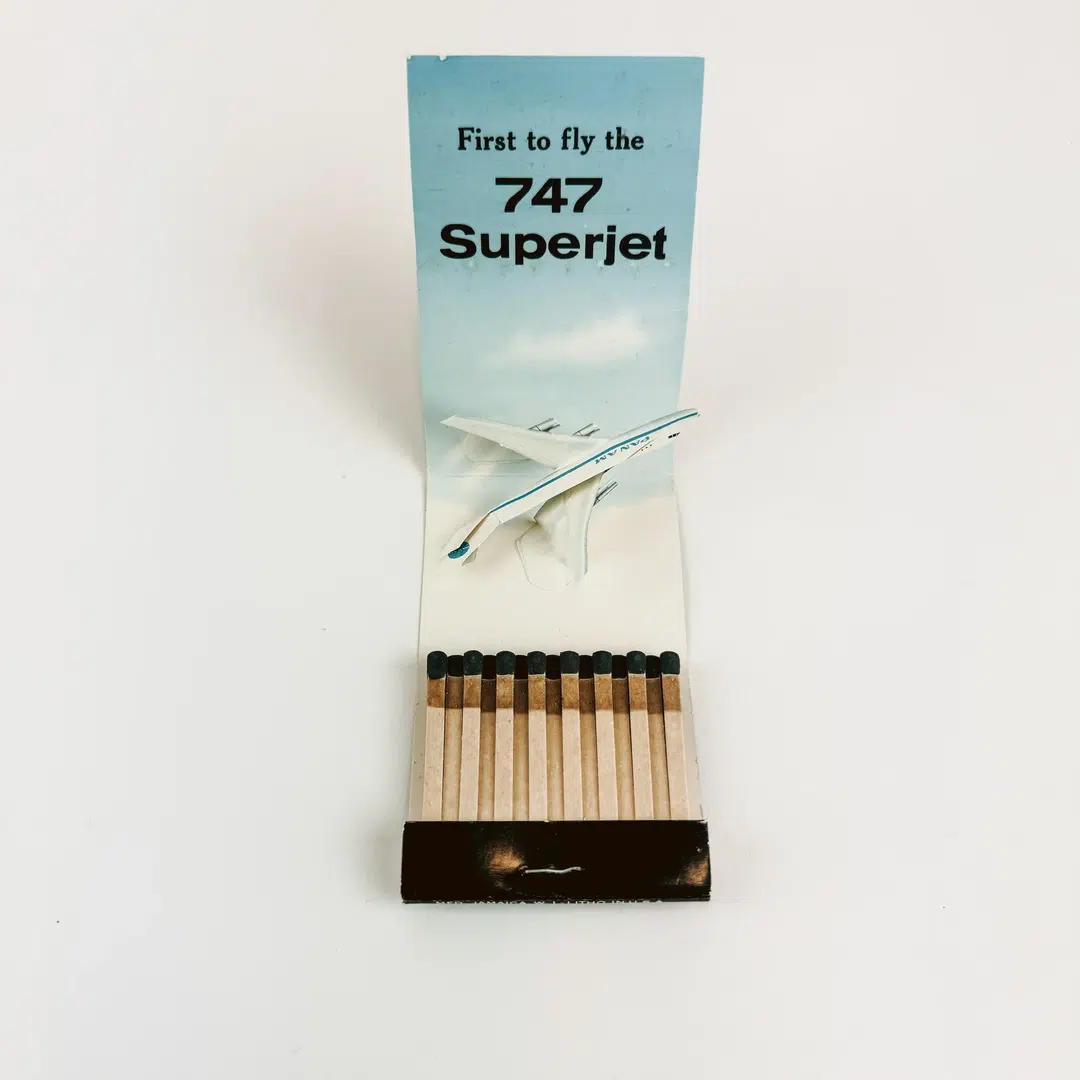
Vintage Pan Am Pop-Up Matchbook
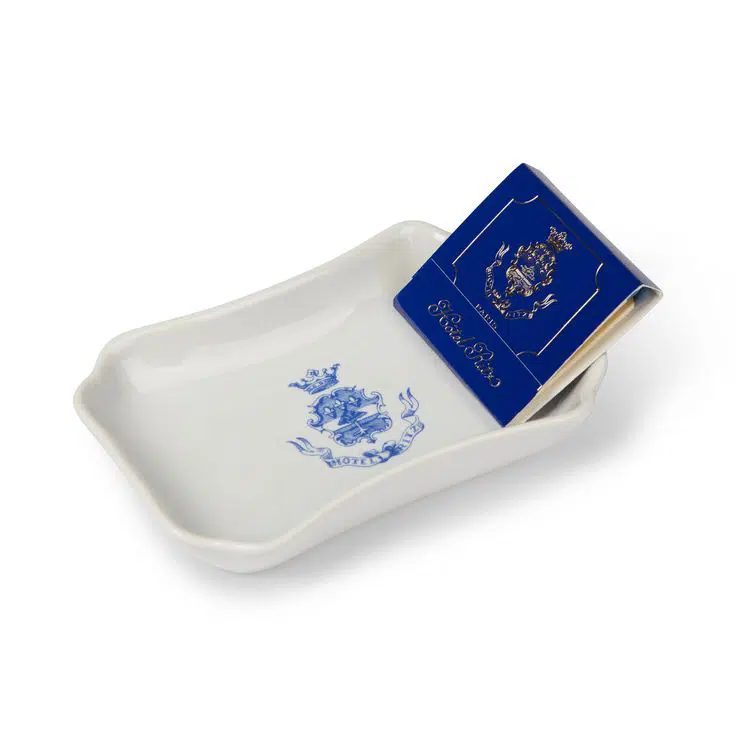
Vintage The Ritz Hotel Paris Matchbook
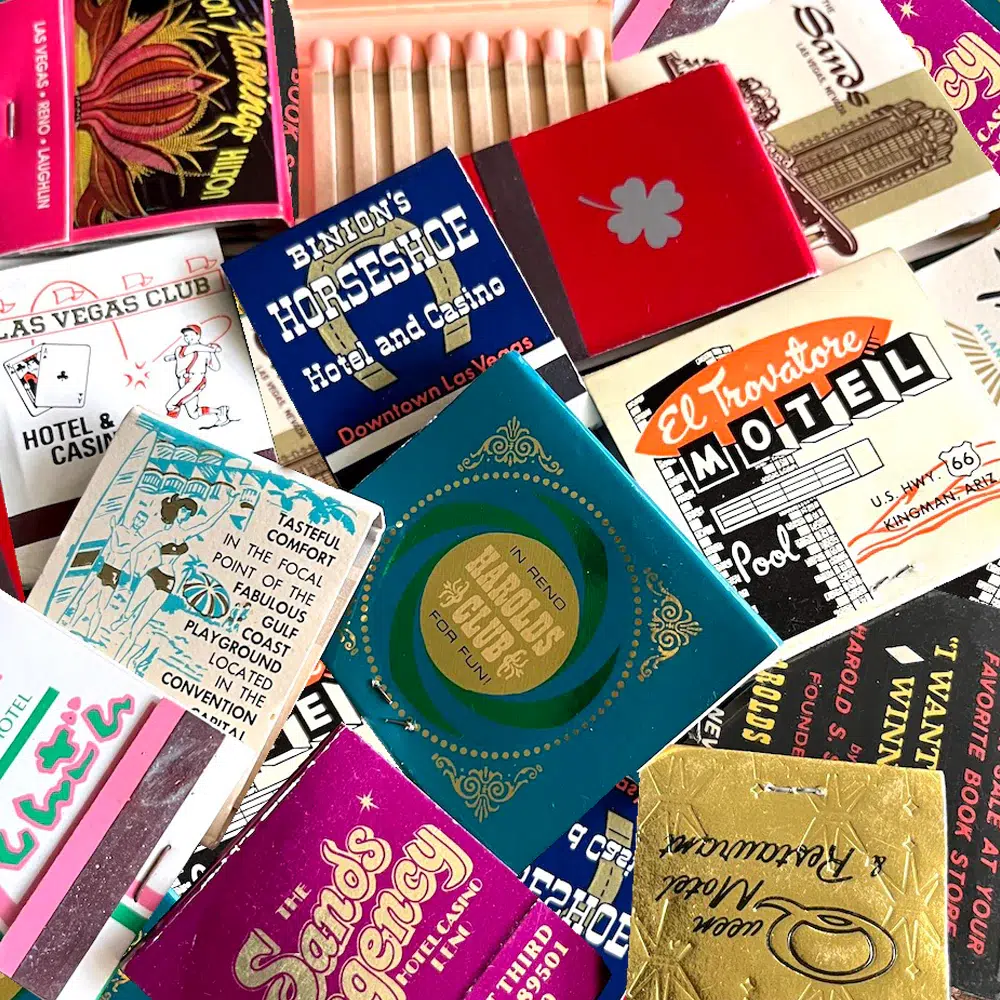
Vintage Hotel, Travel & Casino Matches
Preserving and Displaying Your Collection
To ensure that your matchbooks and matchboxes remain in good condition, proper storage and display are essential:
• Storage: Hardcore matchbook collectors often remove the matchsticks entirely, storing just the match covers pressed flat inside plastic folders or binders for long-term preservation. Store matchbooks and matchboxes in a cool, dry place away from direct sunlight, which can cause fading. Acid-free containers or plastic sleeves in binders can protect them from moisture and physical damage. Our display containers Fred and Cyd Small & Cyd Large were exactly envisioned to keep your collection of matches safely stored and freed from any dust.
• Handling: Avoid handling matchbooks or matchboxes too frequently, as this can cause wear and tear. When displaying them, consider framing a selection of your collection or using display cases to reduce contact.
• Displaying: Some collectors enjoy showing off their collections through creative displays, such as shadow boxes, glass cases, or framed layouts. For long-term preservation, however, it’s best to store originals safely and display replicas or copies.
Understanding Rarity and Value
Both matchbooks and matchboxes can range in value depending on several factors:
• Age: Older matchbooks and matchboxes, especially those from the late 19th and early 20th centuries, tend to be more valuable due to their rarity.
• Design: Unique or artistic designs often attract collectors, especially if they reflect a particular style or era, such as Art Deco matchboxes or advertising matchbooks from the mid-century.
• Condition: As with most collectibles, mint-condition matchbooks and matchboxes (unused and well-preserved) command higher prices than those with wear.
• Rarity: Matchboxes and matchbooks from defunct businesses or limited-edition designs, such as commemorative or special-event items, are typically more valuable.
The Joy of Collecting Matchbooks and Matchboxes
Matchbook and matchbox collecting offers endless possibilities for exploration, creativity, and nostalgia. Whether you’re drawn to the history of a 1950s restaurant matchbook or the intricate design of a 1930s matchbox from Sweden, each piece in your collection tells a story. As you delve deeper into the world of phillumeny, you’ll not only build a collection but also gain a deeper appreciation for the history, culture, and art encapsulated in these tiny treasures.
Starting small and growing your collection with thought and care can turn matchbooks and matchboxes into a lifelong passion, where each new find adds excitement and meaning. So take a matchbook or matchbox in hand, strike your curiosity, and let your collection light the way to a rewarding hobby!
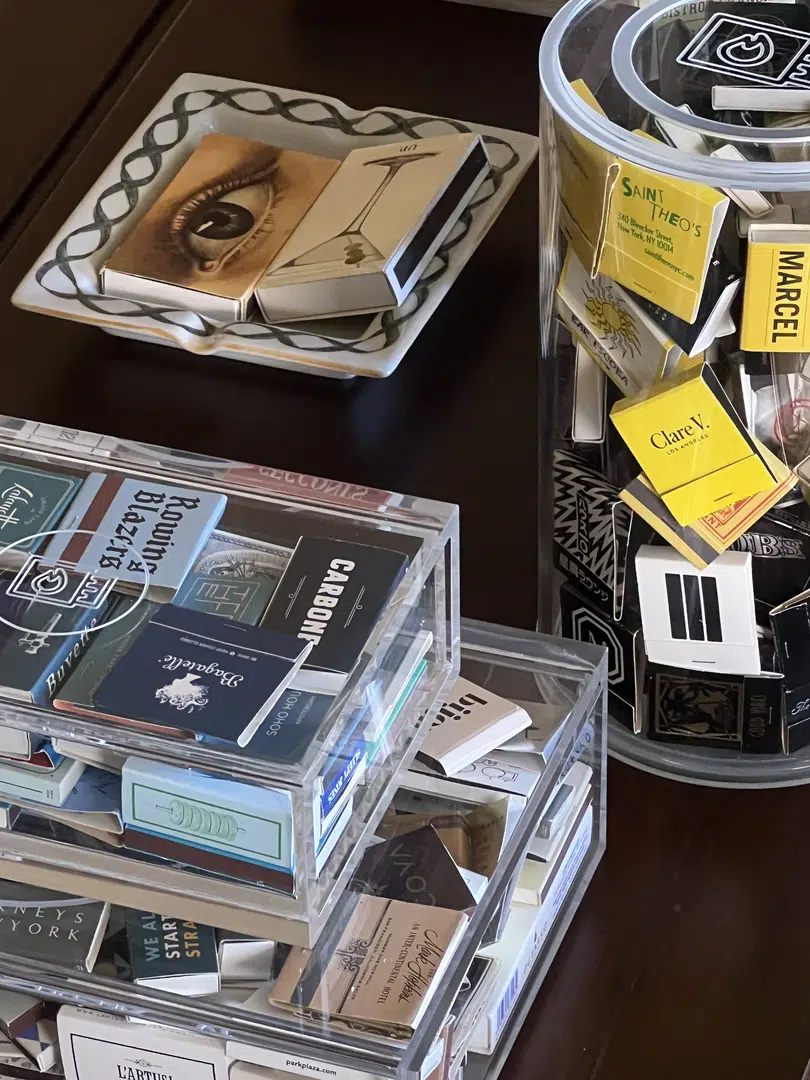
OWAM Small & Large Cyd Boxes and Fred Cylinder
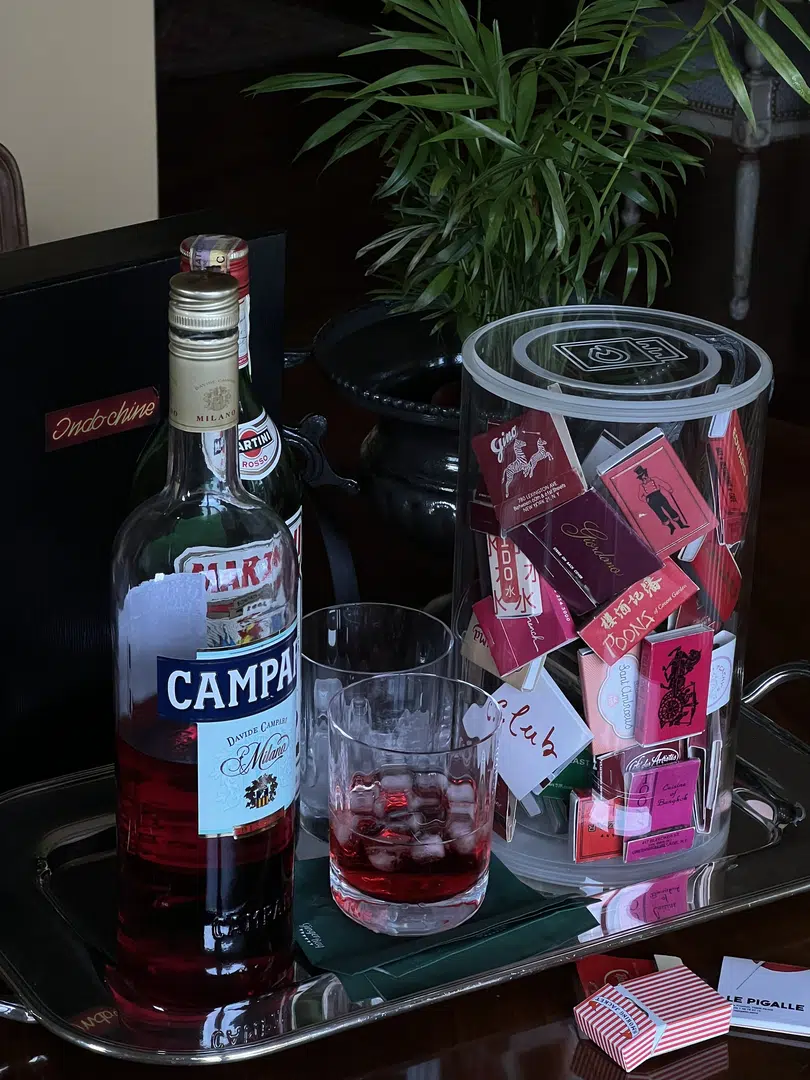
OWAM Fred Cylinder